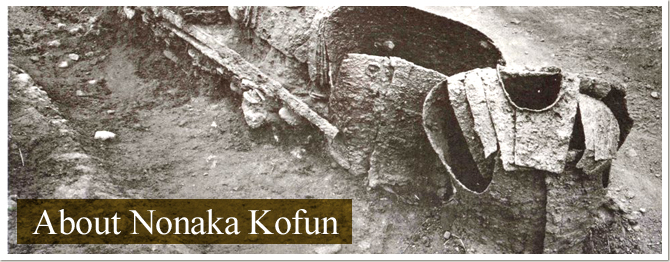Pottery and haniwa
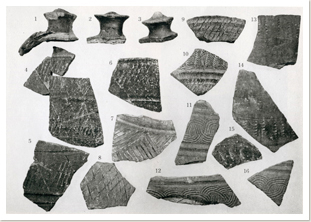 Photo 1: Fragments of Sue ware #1 |
In contrast to the native pottery, stoneware was imported from the Korean Peninsula. Nonaka Kofun excavations also revealed early Sue ware (a type of stoneware) that was created using techniques introduced from the Korean Peninsula. These artifacts provide evidence that the person buried at Nonaka Kofun likely had close relationships with various parts of the southern Korean Peninsula (photo 1). |
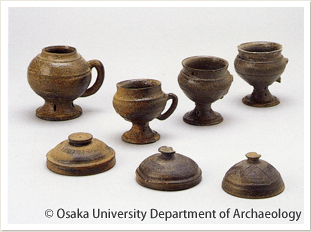 Photo 2: Lidded jars with stand and handle |
Worthy of particular attention are the lidded jars with stand and handle pictured here. While these rare jars can be typologically traced back to the southeastern Korean Peninsula, very few examples have been found even in Korea (photo 2). |
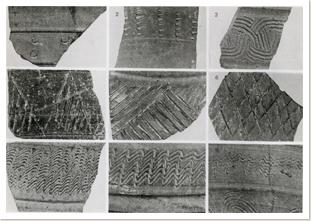 Photo 3: Fragments of Sue ware #2 |
Various patterns decorate these fragments, including triangles, waves, diagonal lattices, and designs applied using bamboo. These various patterns are characteristic of certain regions on the Korean Peninsula (photo 3). |
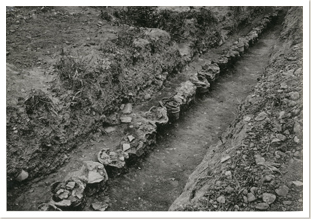 Photo 4: Row of haniwa |
In addition to imported items, native pottery and haniwa were also discovered. The haniwa were found in a dense line surrounding the burial mound of Nonaka Kofun (photo 4). |


